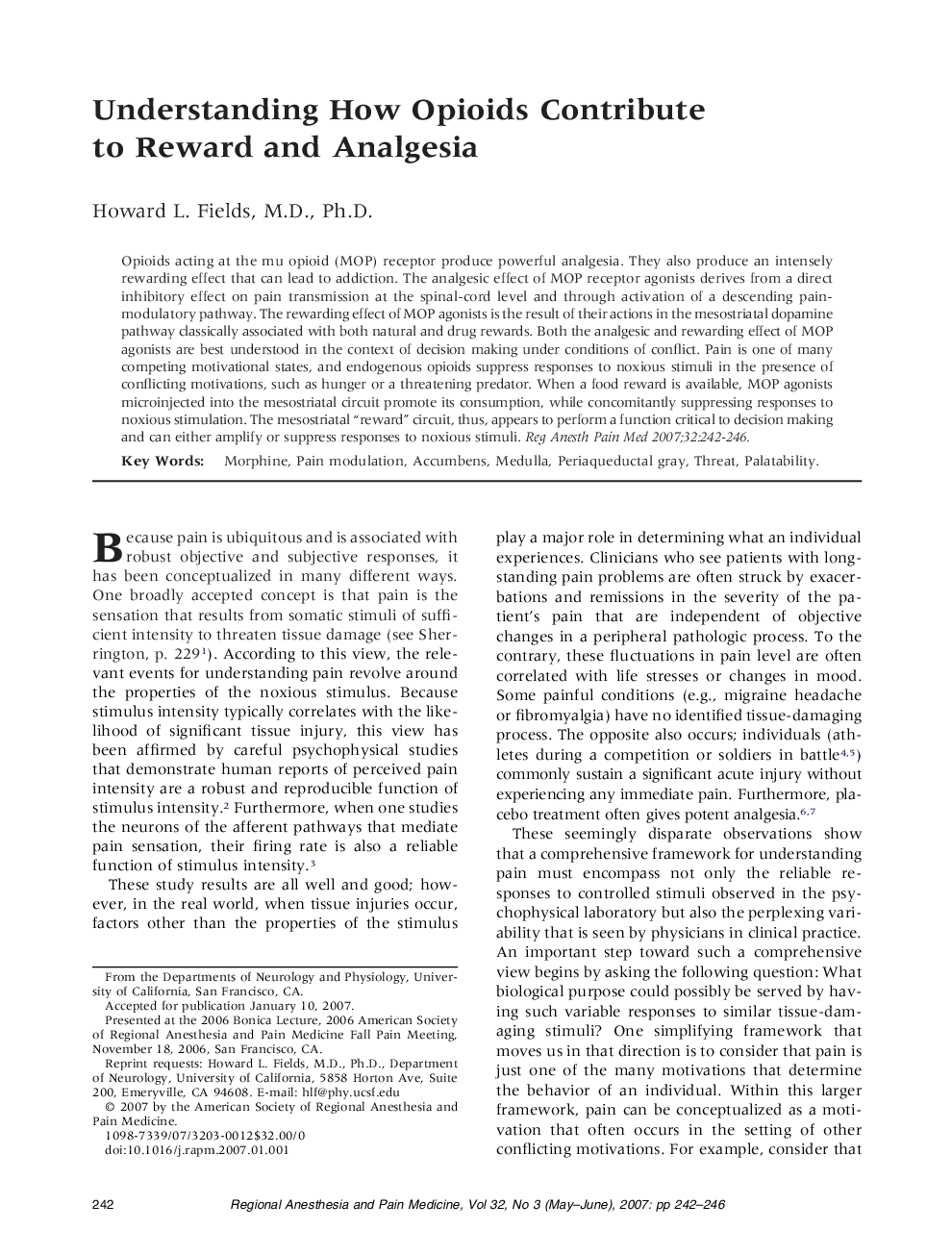| Article ID | Journal | Published Year | Pages | File Type |
|---|---|---|---|---|
| 2767253 | Regional Anesthesia and Pain Medicine | 2007 | 5 Pages |
Abstract
Opioids acting at the mu opioid (MOP) receptor produce powerful analgesia. They also produce an intensely rewarding effect that can lead to addiction. The analgesic effect of MOP receptor agonists derives from a direct inhibitory effect on pain transmission at the spinal-cord level and through activation of a descending pain-modulatory pathway. The rewarding effect of MOP agonists is the result of their actions in the mesostriatal dopamine pathway classically associated with both natural and drug rewards. Both the analgesic and rewarding effect of MOP agonists are best understood in the context of decision making under conditions of conflict. Pain is one of many competing motivational states, and endogenous opioids suppress responses to noxious stimuli in the presence of conflicting motivations, such as hunger or a threatening predator. When a food reward is available, MOP agonists microinjected into the mesostriatal circuit promote its consumption, while concomitantly suppressing responses to noxious stimulation. The mesostriatal “reward” circuit, thus, appears to perform a function critical to decision making and can either amplify or suppress responses to noxious stimuli.
Related Topics
Health Sciences
Medicine and Dentistry
Anesthesiology and Pain Medicine
Authors
Howard L. M.D., Ph.D.,
